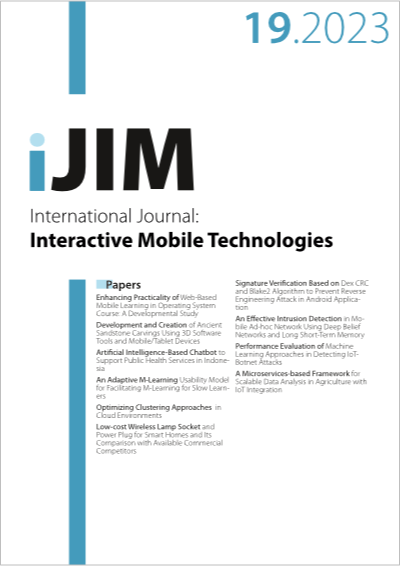Low-cost Wireless Lamp Socket and Power Plug for Smart Homes and Its Comparison with Available Commercial Competitors
DOI:
https://doi.org/10.3991/ijim.v17i19.41145Keywords:
Lamp socket, Power plug, Smart Home, Low-cost, ESP8266Abstract
Smart home manufacturers widely produce Wireless Lamp Socket and Power Plug devices, which offer various features ranging from basic on/off control to more complex functionalities such as monitoring energy consumption, power losses, and harmonics. However, these devices tend to be expensive, as indicated by market surveys. To address this issue, the current study aimed to develop low-cost wireless control nodes for smart homes that operate using relays. The two nodes consisted of lamp socket and power plug built with lowcost electronic components, including a Wi-Fi built-in Microcontroller ESP8266 (Wemos D1 mini model) as the backbone to create ESP-Mesh wireless network and to provide control ports for high/low logic, a relay module, an AC-to-DC converter module, and terminals (E27 screw for lamp socket node and C-type plug for the power plug node). This paper primarily focuses on the hardware aspects. In order to evaluate the effectiveness of the nodes, the following tests are conducted: (1) product demonstration to assess the product functions, (2) power measurement in idle and active conditions, (3) ESP-Mesh connection testing, and (4) RSSI measurement. Functional testing is done using a smartphone with the UPISmartHome version 2.0 Android application, which successfully controlled the nodes wirelessly. In idle conditions, power plug and lamp socket nodes consume 426.36 mWatt and 418.275 mWatt of power, respectively. Further, in active conditions, power plug and lamp socket nodes consume 435.704 mWatt and 440.583 mWatt of power, respectively. RSSI testing results show that both nodes can be controlled within an optimal range of 60 meters (with reference to RSSI below –85 dBm) without the Internet, utilizing the ESP-Mesh feature of ESP8266. This range is deemed reasonable for smart homes of 21, 36, or 45 square meters. Both nodes could be controlled under the ESP-Mesh network that gets build. We also present the comparison with other products of competitors in this paper.
Downloads
Published
How to Cite
Issue
Section
License
Copyright (c) 2023 Syifaul Fuada

This work is licensed under a Creative Commons Attribution 4.0 International License.



